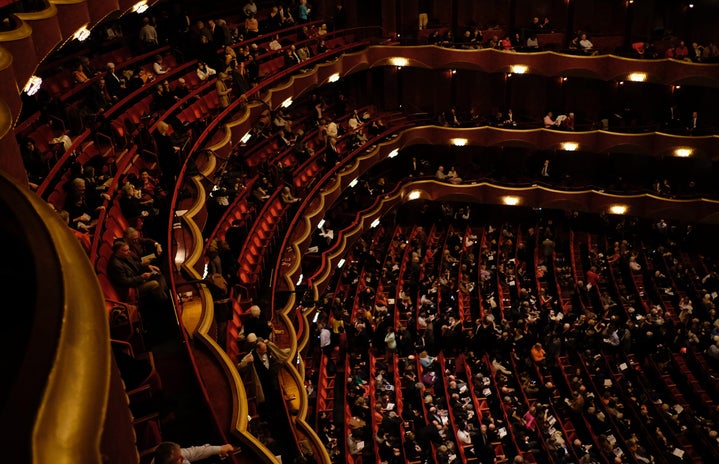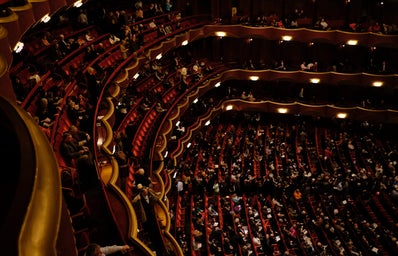Data collected in 2017 show that roughly four percent of the U.S. population identify as LGBTQ. That’s roughly ten million Americans. This Daily Beast article reports that “bisexual people… constitute a ‘slight majority’ of the lesbian, gay, and bisexual community.” But representation of the queer community in media has historically been horrible or non-existent. Recently, representation has become slightly more normalized, as with Callie in Grey’s Anatomy, Rosa in Brooklyn Nine-Nine, and Simon in Love, Simon. However, a lot of these queer relationships often start in unhealthy ways, such as cheating, or end up being incredibly toxic for both people. I’m grateful for queer celebrities using their platform to talk about the lack of representation or blatant misrepresentation, but I’m also painfully aware how often popular media erases or distorts queerness, especially bisexuality.
Basic definition for those who may not know: bisexual means being attracted to people of the same sex and of a different sex(es). This could mean girls, boys, gender queer, non-binary, and all other people on the gender spectrum. Bisexual in no way means greedy, cheater, selfish, confused, questioning, or any other word The Straights would like to use to define us in order to try to make us fit into their heteronormative ideologies. (When I say The Straights, I mean the the incredibly problematic, homophobic, biphobic, transphobic people–the bigots.) I know there is a number of media I could pull from to help me make this argument, but in the celebration of Grey’s Anatomy season 15 having started a couple weeks ago, I think it’d be wonderful to explore how poorly the bisexual character of Callie Torres’ romantic life was crafted. (Disclaimer: I love Grey’s Anatomy. But I do think this romantic plotline could have been better created and we need to be comfortable talking about this.)
Callie is is an orthopedic surgery resident who develops a crush on intern George O’Malley. They date. They get married. George cheats on Callie. They divorce. Callie hooks up with Mark Sloan. Callie meets Erica Hahn. They get together. Neither has ever been with a woman before. Callie panics. She cheats on Erica with Mark. Callie starts dating Arizona Robbins. They break up. Callie sleeps with Mark. Arizona wants to get back together; Callie is now pregnant with Mark’s baby. Arizona isn’t happy about this, but they work it out, and they get married. Arizona cheats on Callie. They separate. They get back together. They start going to couple’s therapy; Callie acknowledges that her being bisexual freaks out Arizona. Callie divorces Arizona. Callie starts dating Penny, they move to New York together. They break up. Arizona moves to New York to be with Callie.
This is a gross simplification of Callie’s romantic life on Grey’s Anatomy. And I’ll admit, I was thrilled when Callie came out as bisexual. It felt really natural, and it was never something that seemed incredibly forced. It’s not that Grey’s didn’t give us decent representation, it’s that they played into all the cliches. Callie is a cheater. Callie is selfish. Callie and Arizona had a very rocky relationship, with both of them being selfish at times, both of them cheating at times, and the relationship overall being fairly toxic. The issue here is that it gives the impression that all queer relationships are like this, because there are so few examples of healthy queer relationships in popular media. Whenever Callie is going through a breakup or just feeling kind of lonely, she sleeps with Mark. Once, when Callie tells Arizona she has something to say, Arizona feels the need to immediately ask Callie, “…Are you sleeping with Mark again? Are you one of those fake lesbians just having a vacation in lesbian land?” before even hearing what Callie has to say. When Callie tells Erica that she is bisexual, Erica tells her, “You can’t be kind of a lesbian,” to which Callie replies, “Yes, I can.” I recognize and appreciate that Callie is bisexual representation, but I’m so sick of the bisexual, cheating, not accepted by their partners storyline. And the argument against this is usually, “Oh, but every good story needs some drama!” and yeah, okay, good stories have conflict. But heterosexual couples can have conflicts that don’t involve cheating or one partner’s sexuality being seen as threatening or a reason to panic or not trust the other. Healthy queer relationships need to be represented in media before these drama and pain filled stories can be used to move the plot along, and right now, there are very few storylines that do that.
This isn’t just a problem in Grey’s Anatomy. In Pretty Little Liars, Alison DiLaurentis spends the entire series saying she doesn’t like girls, yet she turns to Emily whenever she feels lonely. She manipulates Emily constantly, kissing her one night and then being incredibly defensive whenever Emily brings it up again later. At the end of the series, Alison and Emily get married, and for some reason, live happily ever after. This comes after seasons of Alison using Emily’s sexuality for her own gain. But Emily loves her, so she forgives her and they’re happy. Alison’s character coming out as bisexual so last minute (and after seasons of making Emily seem like “the creepy lesbian character”) sends the message to bisexual viewers that beggars can’t be choosers: we should accept what heteronormative standards deem as “enough” representation. Think of it this way: black people have been in movies for a long time, but it started with them in slave roles or as housemaids. (I am in no way trying to imply the fight of black people in America and the fight of bisexual people in America are on the same level, but I feel this comparison might help people understand it a bit more). When we say “we want representation,” we mean good and proper representation.
The movie Blue is the Warmest Color depicts a hypersexual relationship between Adele and Emma. Adele begins the movie with a boyfriend, dates Emma during the movie, and towards the end of the movie, cheats on Emma with a man. She says she did it because she felt alone, she doesn’t love him, it’ll never happen again. Emma accuses her of being ashamed to like girls and tells her she’s a slut and a whore before violently kicking her out. Blue is the Warmest Color falls right into the “bisexuals are cheaters” category. The relationship between Emma and Adele is awful, and it ends the same way a number of relationships involving a bisexual character in fictional media do: the bi character cheats. This reinforced the idea that all bisexual people are cheaters (because we have so few good depictions of bisexual people in media), which actively hurts the relationships of bisexual people in real life. The movie also reinforces the idea that bisexuality is something to be ashamed of. When Emma asks Adele if her coworkers know she has a girlfriend, Adele says she doesn’t want to tell them because “they don’t all need to know. Afterwards they’ll start blabbing.” She says this in the same breath she’s using to tell Emma she isn’t ashamed to be with girls―so now she’s a cheater, a liar, and she’s ashamed of who she is. There’s a lot wrong with this movie, but the depiction of bisexuality and the feelings being bisexual bring are truly terrible.
The time has come for accurate and healthy representation. Love, Simon, which came out earlier this year, was an excellent movie with really good gay representation. Brooklyn Nine-Nine has Rosa, who has recently come out as bisexual and was very quickly and openly accepted by her friends. This is a start, but we can do better, and we need to. As the Daily Beast article says, millennials make up most of the openly LGBTQ population. We know that the number of queer people is not growing, but rather, more and more people are comfortable expressing who they really are. And wouldn’t it be wonderful if the number only continued to grow? If we can make it so the next generation doesn’t need to worry about expressing who they truly are? The best way to start this is with media representation. It’s time to demand accurate representation. Representation that isn’t thrown in just to move the plot along. We aspiring artists need to take this to heart―incorporate healthy queer relationships into our stories, art, movies, and all media that we work on. Like Callie says in Grey’s Anatomy, “The B [in LGBTQ] doesn’t stand for badass―okay, it does, but it also stands for bi.” Let’s show them just how badass and bi we really are.



